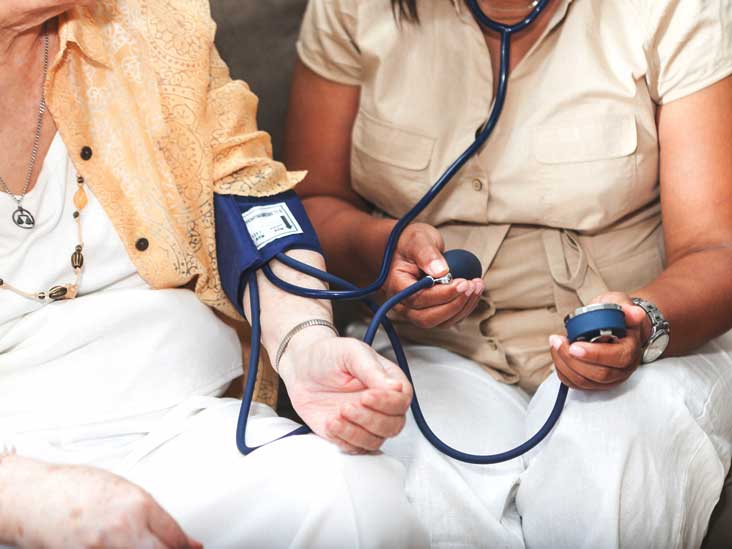10 Absolutely How To Find Pulse Pressure - Find the fleshy middle portion of the back middle of your knee. Pulse in 10 seconds x 6 = \ __ beats per minute.
When you feel for someone's pulse, what is it you're . Find out more about why it's so important to be able to.
How to find pulse pressure

9 Efficient How To Find Pulse Pressure. You should feel a tapping or pulsing against your fingers. Conversely, if your blood vessels dilate, your heart will find significantly lesser pressure to push against. Put the tip of your index and long finger in the groove of your neck along your windpipe to feel the pulse in your carotid artery. How to find pulse pressure
Then, gently press your index and third finger on your neck to the side of your windpipe. Do not press on the carotid artery on both sides of your neck at the same time. The nurse has assessed the patient to have a blood pressure of 140/90, an apical pulse of 82, and a radial pulse of 76. How to find pulse pressure
Emily reeve, senior cardiac nurse at the british heart foundation, shows you how to check your pulse. A pulse pressure greater than 60 is considered a risk factor for cardiovascular disease, especially for older adults. Others call it the “kneepit” for short. How to find pulse pressure
Generally, a pulse pressure greater than 40 mm hg is unhealthy. A pulse pressure that is less than 25% of the systolic pressure is inappropriately low or narrowed, whereas a pulse pressure of greater than 100 is high or widened. Add the two pulse pressures together. How to find pulse pressure
Press with increasing pressure until you. As a result, more blood is pumped, or you can say that stroke volume increases (and cardiac output as well). Resting blood pressure is normally around 120 / 80 How to find pulse pressure
If you do this, tell your doctor how many times you took your pressure to calculate this average and how long you. Doctors call this the “popliteal fossa.”. Place your index and middle finger of your hand on the inner wrist of the other arm, just below the base of the thumb. How to find pulse pressure
For a person with a blood pressure of 120/80, for example, the mean arterial pressure would be approximately 80 + 1/3 (40) = 93 mmhg. Once you feel your heartbeat, start your timer or keep an eye on your watch while you count the number of heartbeats for 30 seconds. Measuring pulse pressure may help a health care provider predict the risk of a heart event, including a heart attack or stroke. How to find pulse pressure
This may cause you to feel lightheaded or dizzy, or possibly faint. Pulse pressure is the difference between your systolic blood pressure and diastolic blood pressure. Mean arterial pressure = diastolic pressure + 1/3 pulse pressure. How to find pulse pressure
During systole, the contraction of the. Irregular heart beat, which might. The systemic pulse pressure is approximately proportional to stroke volume, or the amount of blood ejected from the left ventricle during systole (pump action) and inversely proportional to the compliance (similar to elasticity) of the aorta. How to find pulse pressure
Mean arterial pressure (map) calculation formula explained for nursing students and nurses. Like high blood pressure, high pulse pressure is linked to heart disease. Apply just enough pressure so you can feel each beat. How to find pulse pressure
Wide pulse pressure increases when there is a loss of elasticity in the arteries, and depending on your blood pressure, wide pulse pressure can cause organ damage or lead to heart failure. This article includes a video showing you how to take a reading of your heart rate, and it explains what a normal heart rate should be. Pulse pressure is an indicator of how stiff or flexible the arteries are and how well the heart pumps blood. How to find pulse pressure
Find out why you should monitor your. Count the number of taps you feel in 10 seconds. It can also be present in someone How to find pulse pressure
For example, a person could have very high blood pressure with readings of 160/120 mmhg, however, pulse pressure is 40 which is considered normal. Pulse wave velocity (pwv) is a measure of arterial stiffness, or the rate at which pressure waves move down the vessel. Learn what the pulse is, where it is, and how to find it. How to find pulse pressure
A 2018 study found that pulse pressure is. Possible pulse pressure variations include all of the following except ______. Calculation pulse pressure is the (higher) systolic blood pressure minus the (lower) diastolic blood pressure. How to find pulse pressure
The nurse records a pulse pressure of: Pulse pressure explained pulse pressure (pp) is the difference between the systolic and the diastolic blood pressure, measured in milometers of mercury (mmhg). Paradoxical pulse (pulsus paradoxus) is an important finding that is associated with cardiac tamponade, a life threatening condition. How to find pulse pressure
What is a mean arterial pressure (map)? A rise in total peripheral resistance and cardiac rate increases the diastolic pressure more than it increases the systolic pressure. 80 / 2 = 40. How to find pulse pressure
Divide the total from step 1 by the number of times you took the measurement, in this case, twice. As blood flows through the vessels of the circulatory system, it moves out of the left ventricle and into the aorta where it is then pushed through the rest of the circulatory system. Cellular arteries are efferent vessels that lead away from the heart. How to find pulse pressure
To check your pulse by hand, find a stopwatch, timer, or clock with a second hand. Decreased heart rate, known as bradycardia, which will increase pulse pressure. 42 + 38 = 80. How to find pulse pressure
The number you got in step 2 is average pulse pressure is 40. How to find pulse pressure
 Image result for jugular venous pulse tracing Jugular . The number you got in step 2 is average pulse pressure is 40.
Image result for jugular venous pulse tracing Jugular . The number you got in step 2 is average pulse pressure is 40.
 Ekg Monitor in Icu Unit Stock Footage Video (100 Royalty . 42 + 38 = 80.
Ekg Monitor in Icu Unit Stock Footage Video (100 Royalty . 42 + 38 = 80.
 Pulse Pressure Calculator, Variation, and More . Decreased heart rate, known as bradycardia, which will increase pulse pressure.
Pulse Pressure Calculator, Variation, and More . Decreased heart rate, known as bradycardia, which will increase pulse pressure.
 How to Calculate Pulse Pressure. . To check your pulse by hand, find a stopwatch, timer, or clock with a second hand.
How to Calculate Pulse Pressure. . To check your pulse by hand, find a stopwatch, timer, or clock with a second hand.
 how to check your heart rate and Pulse YouTube . Cellular arteries are efferent vessels that lead away from the heart.
how to check your heart rate and Pulse YouTube . Cellular arteries are efferent vessels that lead away from the heart.
 Back to the basics! Fun fact, the dorsalis pedis pulse is . As blood flows through the vessels of the circulatory system, it moves out of the left ventricle and into the aorta where it is then pushed through the rest of the circulatory system.
Back to the basics! Fun fact, the dorsalis pedis pulse is . As blood flows through the vessels of the circulatory system, it moves out of the left ventricle and into the aorta where it is then pushed through the rest of the circulatory system.

Comments
Post a Comment